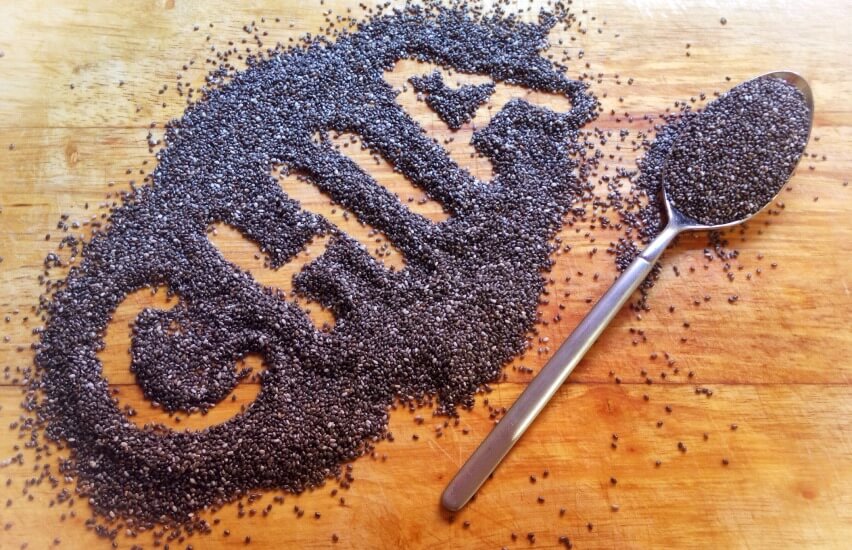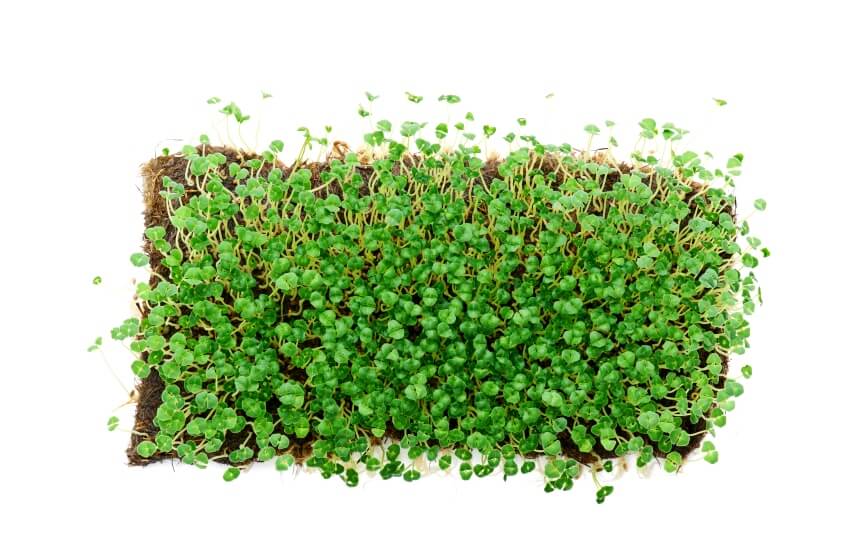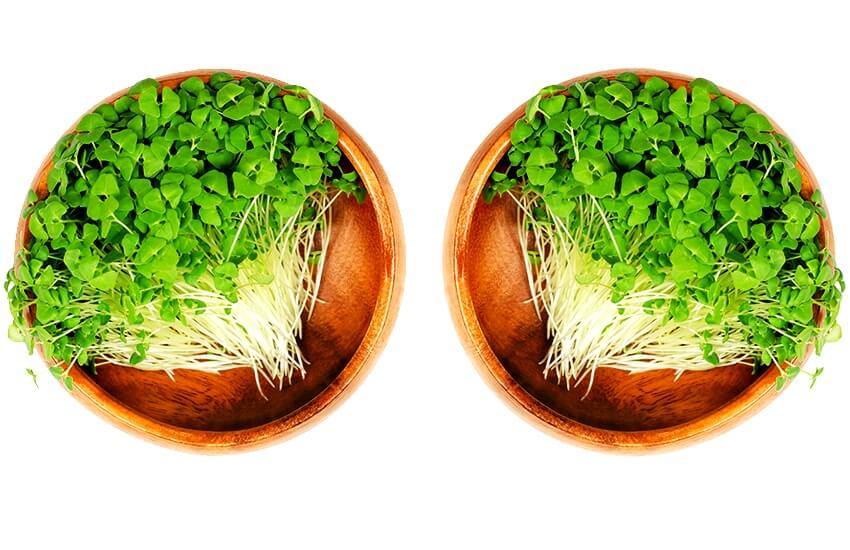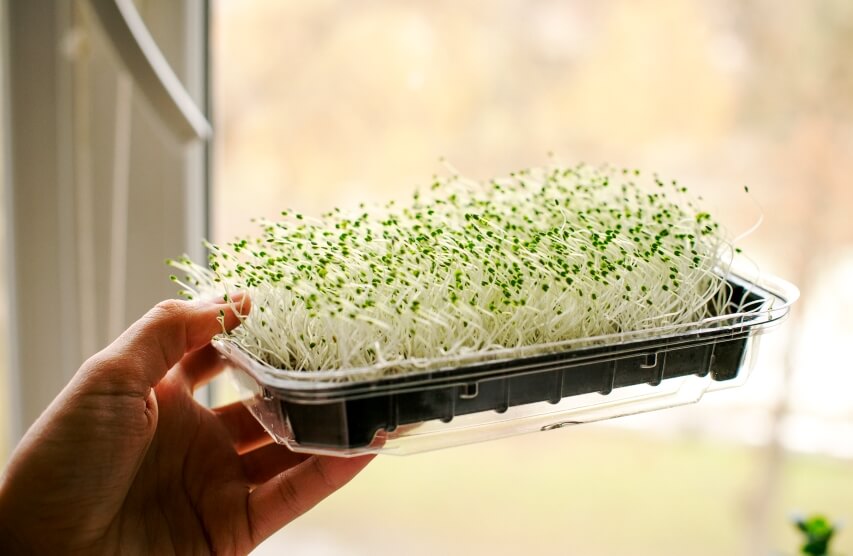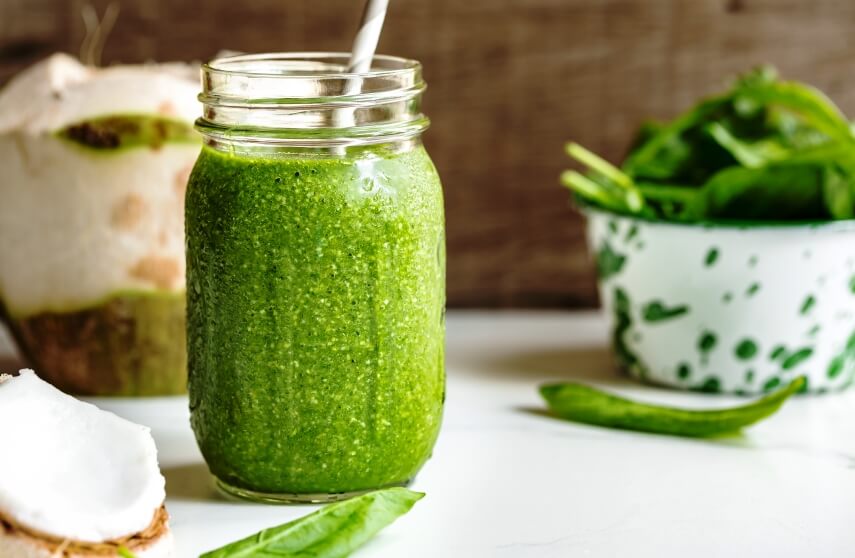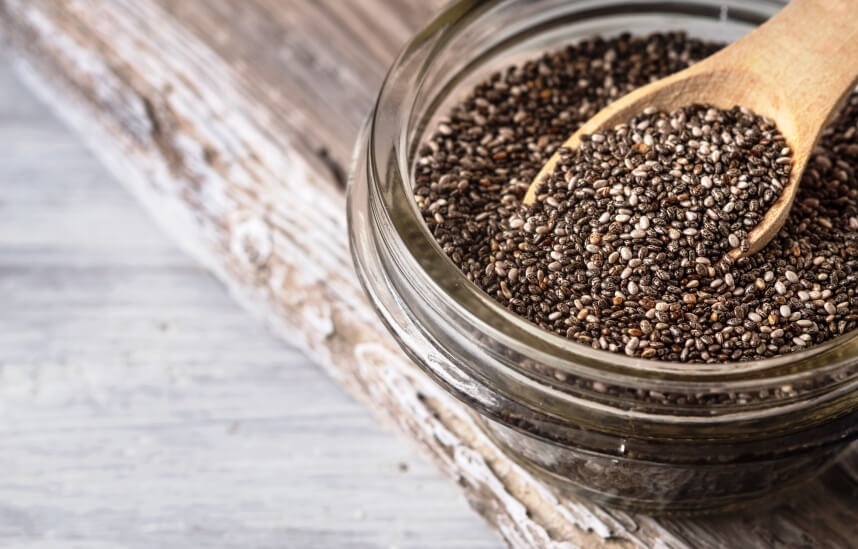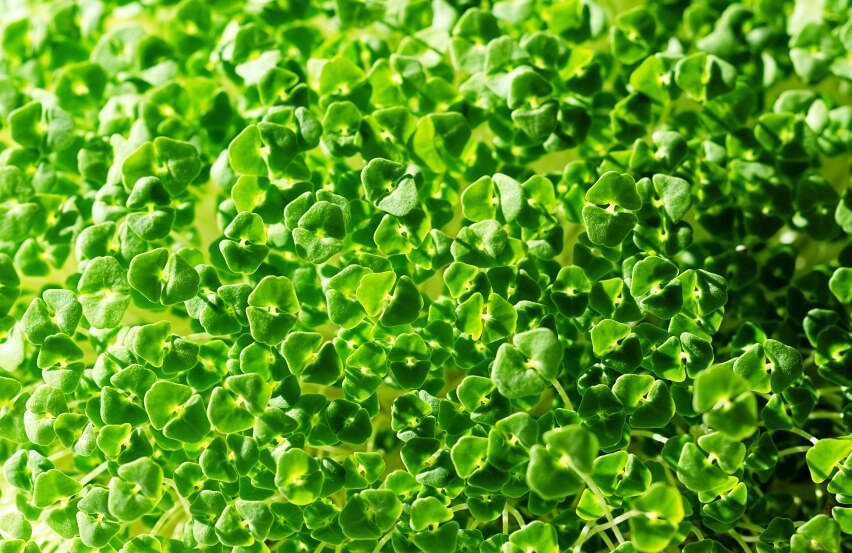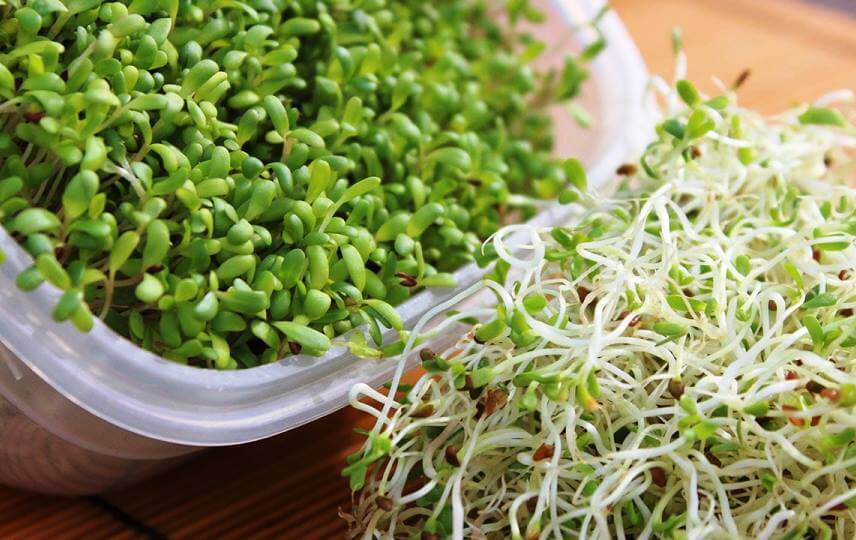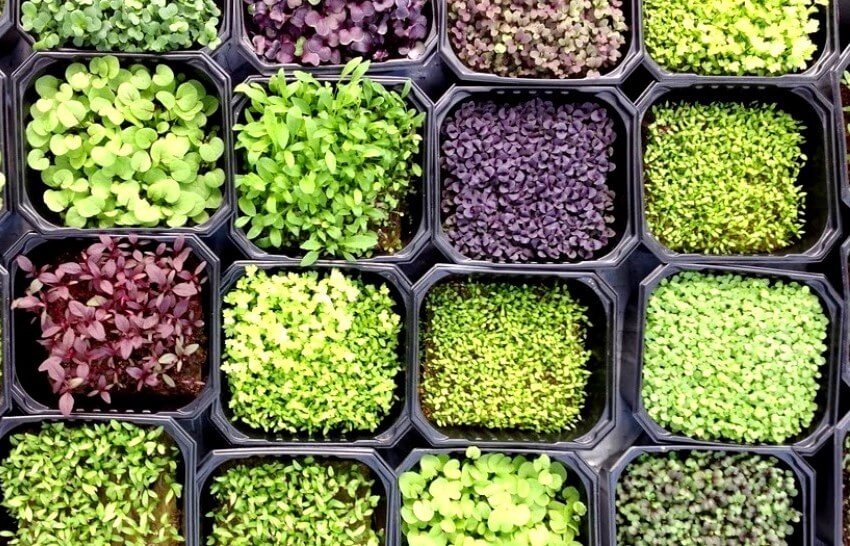Chia plants are resilient and easily adjust to many environmental factors. Given all the advantages of eating chia microgreens, growing them is a fantastic idea. Chia microgreens are popular because they are easy to grow and have several health Benefits. They have high levels of omega oils, amino acids, calcium and proteins.
If Like to know more about microgreens, check these articles:
<<What Are Microgreens >> and <<Microgreens Benefits for Skin>>
chia History
Salvia hispanica, a desert plant and a member of the mint family, is the source of chia seeds. Several branded names, as well as the common name “chia” are frequently used for marketing Salvia hispanica seeds.
The seed is thought to have originated in Central America, where the ancient Aztecs used it as the main ingredient in their diet. Chia was first documented by the Aztecs around 3500 B.C. In fact, it was a staple diet of the Aztecs. Chia continued to be widely used for a long period. It was later farmed in Mexico by the Teotihuacan and Toltec people between 1500 and 900 B.C.
In addition to being consumed whole, chia seed has a long history of other uses. It was blended with other ingredients to make drinks, used as medicine, grounded into flour, and pressed to make oil.
It was valuable since it could be kept for a long time (perfect for traveling). In addition to these useful applications, the chia seed was deeply ingrained in Aztec culture. It was holy and sacrificed as part of religious rituals.
The chia seed was thought to have mystical abilities by prehistoric peoples. “Chia” means “strong” in Mayan. This is most likely related to the substantial energy that chia seeds offer. The endurance of the ancient warriors was attributed to this small seed. For some groups of people today, this is still true.
The Tarahumara tribe of Mexico is well-known for its runners. A combination of chia seeds, lemon, and water, is what these runners consume. They are claimed to be able to run for hundreds of kilometers after consuming this mixture [1, 2].
Chia microgreens overview
| Family | Lamiaceae |
| Nutrition | Manganese, Phosphorus, Copper, Selenium, Iron, Magnesium, Calcium, zinc, Vitamin B1 & B3 |
| Average days to germinate | 4 to 6 days |
| Average days to harvest (after germination) | 6 to 12 days |
| Difficulty | Easy |
Nutrition facts of chia microgreen seeds
High levels of numerous minerals are present in chia seeds. But they are a poor source of Vitamins. Chia seeds’ most prevalent minerals and vitamins are Manganese, phosphorus, copper, selenium, iron, magnesium, calcium, zinc, and vitamins B1 and B3 [3, 4].
Calcium can be found in abundance in chia seeds. Chia seeds are incredibly high in calcium, with 631 milligrams per 100 grams. In other words, we can say that three tablespoons of chia seeds will provide more calcium than a glass of milk [5].
Health benefits of chia microgreens
Sprouts have more nutrients compared to their seeds. Additionally, sprouts have lower antinutrient concentrations, making it more straightforward for your body to absorb all the nutrients they contain.
Microgreens offer more nutritional value and a higher level of antioxidants than sprouts. However, they also require more time to mature and are harder to harvest [6, 7]. Therefore, This means that if we look at the health benefits of chia seeds or chia sprouts, we can comprehend the advantages of chia microgreens. The following are a few of the most significant benefits of chia microgreen seeds [4]:
chia sprouts
antioxidants
Antioxidants are plentiful in chia seeds. Antioxidants can promote human health, by neutralizing reactive molecules known as free radicals, which can harm body cells.
The specific antioxidants found in chia seeds are kaempferol, chlorogenic acid, myricetin, caffeic acid, and quercetin. These may all have anticancer capabilities in addition to heart and liver protection.
weight loss
Chia microgreens’ fiber and protein may help people who are attempting to reduce weight. According to scientific research, ingesting fiber may help reduce overweight and obesity. The protein in chia seeds may also aid in lowering appetite.
Chia microgreens may be a valuable addition to a balanced, healthy diet if you are attempting to lose weight, but they might not be enough to make a significant difference in your weight reduction on their own.
Spinach coconut smothie wih chia seeds
Healthy heart
Consuming chia seeds may lower your risk of heart disease due to their high fiber and omega-3 content. Chia microgreens and other sources of soluble fiber can help reduce blood levels of total and LDL (bad) cholesterol. This can ultimately lower your risk of developing heart disease.
Consuming ALA, an omega-3 fatty acid found in chia seeds, has also been associated with a lower risk of developing heart disease. Chia seeds may generally be good for your heart, but further research is required.
Healthy bones
Chia seeds are rich in vital bone health nutrients, such as calcium, phosphorus, and magnesium.
According to several observational studies, getting enough of these nutrients is crucial for maintaining healthy bone mineral density, which is a sign of bone strength.
Additionally, the ALA in chia seeds may benefit bone health. Consuming this nutrient has also been linked to enhanced bone mineral density. So, consuming chia seeds daily will likely maintain your bones healthy.
blood sugar levels
Chia microgreen seeds’ high fiber content and other healthy ingredients may help manage blood sugar.
People with diabetes may experience high blood sugar levels. Heart disease is one of the consequences linked to persistently elevated fasting blood sugar levels.
Animal studies suggest that chia seeds may enhance insulin sensitivity. This may aid in stabilizing blood sugar levels after eating meals. Although there is a lack of human research, some studies have produced encouraging findings about this effect of chia seeds.
How to grow chia microgreens
It takes 4 to 6 days for the chia to germinate. Allow chi microgreens to reach 2 to 3 inches tall. You can harvest them almost two weeks after planting them. The procedure of growing chia microgreens is almost similar to other microgreens. Read the <<Growing Microgreens >> article to learn more about the general method for growing microgreens.
chia microgreens Growing procedure
To grow chia microgreens indoors, you can follow these instructions:
- For a 5×5-inch microgreen tray, sprinkle 1-2 tablespoons of seed on a medium that has appropriately been wet.
- Cover your crop with a plate or tray to keep moisture in and light out.
- Spray water on your soil to keep it moist. Do not drench the soil. Peat moss, coconut coir, or any other type of microgreen soil can be used for this purpose.
- Once your plants have started to germinate, take off the protection and move your crop to a spot with adequate lighting (near a sunny window or under a grow light)
- harvest your chia microgreens when they are open and around two to three inches tall (10 to 15 days after planting).
- Cut the micro chia using a pair of scissors or a sharp knife just above the soil.


